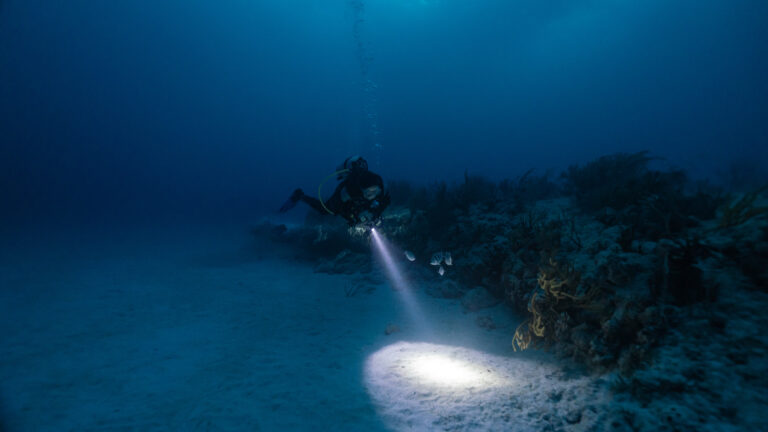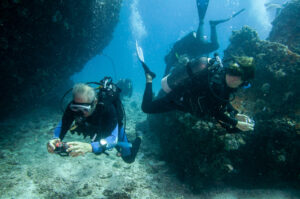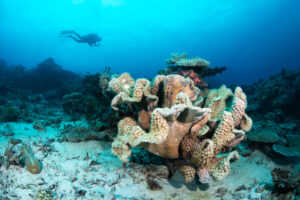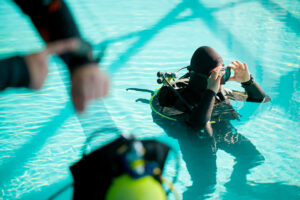What is Vasoconstriction?
Vasoconstriction is the process by which blood vessels narrow due to the contraction of muscular walls in the vessels, primarily small arteries and arterioles. This biological phenomenon is significant in regulating blood flow and blood pressure throughout the body. For scuba divers, understanding vasoconstriction is crucial because it directly impacts how their bodies react to the underwater environment, including the cold temperatures and increased pressure that are often encountered during a dive.
Physiology of Vasoconstriction
Vasoconstriction occurs when the smooth muscle cells within the walls of blood vessels contract. This contraction is influenced by various factors, including neural and hormonal signals. The sympathetic nervous system plays a critical role in this process, releasing neurotransmitters such as norepinephrine, which bind to receptors on the smooth muscle cells, causing them to contract. Additionally, hormones like adrenaline can induce vasoconstriction during stress responses.
The primary function of vasoconstriction is to redirect blood flow to vital organs and maintain blood pressure. When blood vessels constrict, the resistance to blood flow increases, which can elevate blood pressure. This mechanism is essential for maintaining adequate perfusion to organs like the brain and heart, especially in situations where blood volume might be compromised.
Vasoconstriction also helps regulate body temperature. In cold environments, the body reduces blood flow to the skin and extremities by constricting peripheral blood vessels, thereby conserving heat and maintaining core body temperature. This thermoregulatory function is particularly important for divers who are often exposed to cold water, which can rapidly lower body temperature and lead to hypothermia if not properly managed.
The impact of vasoconstriction on tissue perfusion is another critical aspect. While it helps prioritize blood flow to essential organs, prolonged or excessive vasoconstriction can lead to reduced oxygen delivery to peripheral tissues. This can cause complications such as tissue hypoxia, where tissues do not receive adequate oxygen to function properly. Understanding these physiological effects is essential for divers to recognize the signs of potential issues and take appropriate actions.
Causes of Vasoconstriction in Scuba Diving
Cold water exposure is one of the primary triggers of vasoconstriction in scuba diving. When a diver enters cold water, their body responds by constricting blood vessels near the surface of the skin and in the extremities. This response helps to minimize heat loss and preserve core body temperature. However, it also means that less blood is circulating through the extremities, which can impact a diver’s ability to perform tasks that require dexterity.
Depth and pressure changes also contribute to vasoconstriction. As a diver descends, the ambient pressure increases, which can influence blood vessel behavior. The increased pressure can enhance the effect of vasoconstriction, further reducing blood flow to certain areas of the body. This is particularly relevant during deep dives, where the pressure can significantly alter physiological responses and require careful management to avoid complications.
Stress and anxiety are additional factors that can cause vasoconstriction in divers. The anticipation of a dive, especially for less experienced divers, can trigger the body’s stress response, releasing hormones like adrenaline that cause vasoconstriction. Managing stress and anxiety is crucial not only for maintaining comfort and enjoyment during a dive but also for preventing excessive vasoconstriction that can lead to health issues.
Understanding these causes helps divers prepare and take preventative measures. Proper thermal protection, gradual acclimatization to cold water, and stress management techniques are essential strategies to mitigate the effects of vasoconstriction and ensure a safer and more enjoyable diving experience.
Implications of Vasoconstriction for Divers
The effects of vasoconstriction on blood gas levels are significant for divers. Reduced blood flow to peripheral tissues can impact the levels of oxygen and carbon dioxide in the blood. For instance, vasoconstriction can lead to hypoxia, a condition where tissues receive insufficient oxygen, which is particularly dangerous underwater where access to oxygen is limited. Additionally, the buildup of carbon dioxide due to reduced blood flow can lead to hypercapnia, a condition characterized by elevated levels of carbon dioxide in the blood, causing symptoms such as headaches, confusion, and in severe cases, loss of consciousness.
Vasoconstriction also increases the risk of decompression sickness (DCS), commonly known as “the bends.” DCS occurs when dissolved gases, primarily nitrogen, come out of solution and form bubbles in the blood and tissues as the diver ascends and pressure decreases. Vasoconstriction can exacerbate this condition by altering blood flow patterns and increasing the likelihood of bubble formation in less-perfused tissues. Proper ascent rates and adherence to decompression stops are critical to managing this risk.
The physical performance of divers is another area impacted by vasoconstriction. Reduced blood flow to the muscles can lead to decreased endurance and increased fatigue. Divers may find it harder to perform physically demanding tasks, such as swimming against a current or carrying heavy equipment. Recognizing the signs of vasoconstriction and taking appropriate breaks can help mitigate these effects and ensure divers maintain their strength and stamina throughout the dive.
Safety underwater is paramount, and understanding the implications of vasoconstriction helps divers make informed decisions. Recognizing symptoms like tingling in extremities, unusual fatigue, or confusion can alert divers to potential issues with blood flow and oxygenation. Promptly addressing these symptoms by adjusting the dive plan, ascending to a shallower depth, or even aborting the dive if necessary, can prevent serious complications and enhance overall safety.
Managing Vasoconstriction in Diving
Preventive measures are vital in managing vasoconstriction during diving. One of the most effective strategies is the use of appropriate thermal protection. Wetsuits, drysuits, and other thermal gear help insulate the body and reduce heat loss, thereby minimizing the body’s need to constrict blood vessels to preserve core temperature. Divers should select gear based on the water temperature and the duration of the dive to ensure adequate protection.
Acclimatization to cold water is another key strategy. Gradual exposure to colder temperatures allows the body to adapt and reduces the shock response that triggers intense vasoconstriction. Divers can achieve this by starting with shorter dives in cold water and progressively increasing the duration as their bodies acclimate.
Stress management techniques are crucial for minimizing anxiety-induced vasoconstriction. Practices such as controlled breathing, mindfulness, and pre-dive visualization can help calm the nervous system and reduce the release of stress hormones that cause vasoconstriction. Ensuring that divers are well-prepared and confident in their skills also contributes to lower stress levels and a more relaxed dive experience.
Proper ascent techniques are essential in managing pressure-induced vasoconstriction. Gradual ascent rates and the inclusion of safety stops allow the body to adjust to pressure changes and minimize the physiological stress that can trigger vasoconstriction. Divers should adhere to established ascent protocols and use dive computers to monitor their ascent rate and depth accurately.
Recognizing and responding to the signs of vasoconstriction is vital for diver safety. Symptoms such as cold extremities, reduced dexterity, or unusual fatigue should prompt divers to take action. This may involve adjusting the dive plan, seeking warmer water, or even aborting the dive if necessary to ensure safety. Training and awareness are key to enabling divers to identify and respond to these signs effectively.
By implementing these management strategies, divers can reduce the risk of complications associated with vasoconstriction and enhance their overall diving experience. Preparedness and proactive measures are essential for maintaining safety and performance underwater.
Key Takeaways
Understanding vasoconstriction and its implications is crucial for scuba divers. By recognizing the physiological processes involved, the causes and effects of vasoconstriction, and effective management strategies, divers can enhance their safety and performance underwater. Proper thermal protection, stress management, and adherence to safe diving practices are essential components in managing vasoconstriction and ensuring a successful and enjoyable dive experience.

















